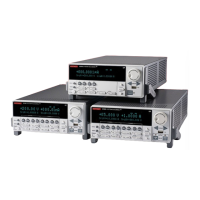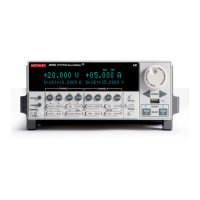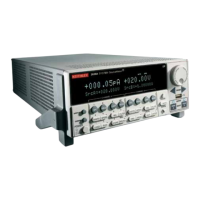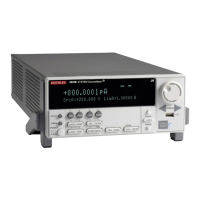600B System SourceMeter® Instrument Reference Manual Section 7:
2600BS-901-01 Rev. C / August 2016 7-5
1. Instrument command name. Indicates the beginning of the command description. It is followed
by a brief description of what the command does.
2. Type of command. Commands can be functions, attributes, or constants. If the command is an
attribute, it can be read-only (R), read-write (RW), or write-only (W). For detail on commands, see
Introduction to TSP operation (on page 5-1
).
3. TSP-Link accessible. Yes or No; indicates whether or not the command can accessed through a
TSP-Link network.
4. Affected by. Commands or actions that have a direct effect on this command.
• LAN restore defaults
• Recall setup
• Instrument reset: This command is reset when reset(), localnode.reset(), or *RST is sent.
1. Where saved. Indicates where the command settings reside once they are used on an
instrument. Options include:
• Not saved: Command is not saved anywhere and must be typed each time you use it.
• Nonvolatile memory: Storage area in the instrument where information is saved when the instrument
is turned off.
• Saved setup: Command is saved as part of the saved setup.
1. Default value: Lists the default value or constant for the command. The parameter values are
defined in the Usage or Details sections of the command description.
Command usage
The Usage section of the remote command listing shows how to properly structure the command.
Each line in the Usage section is a separate variation of the command usage. All possible command
usage options are shown here.
Figure 121: TSP usage description

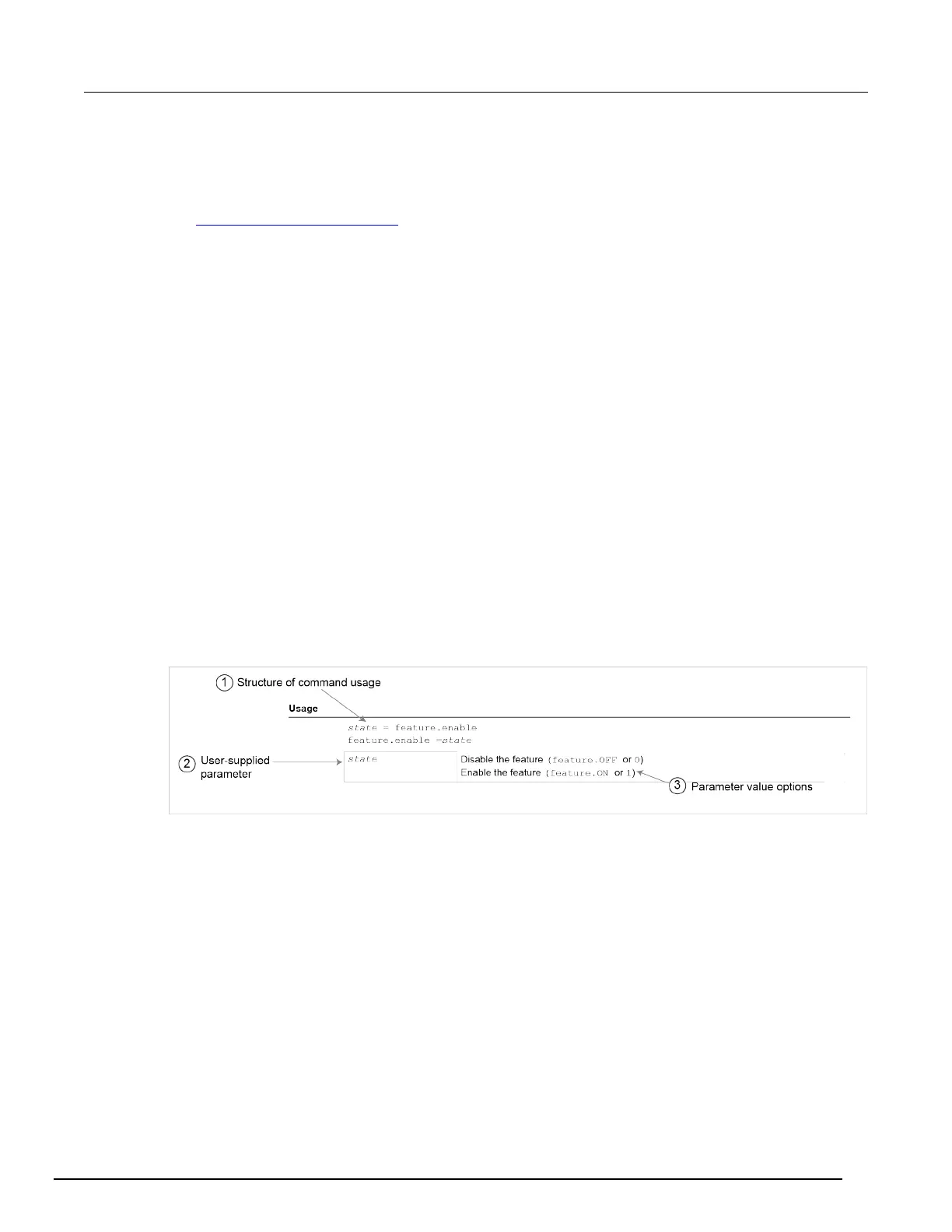